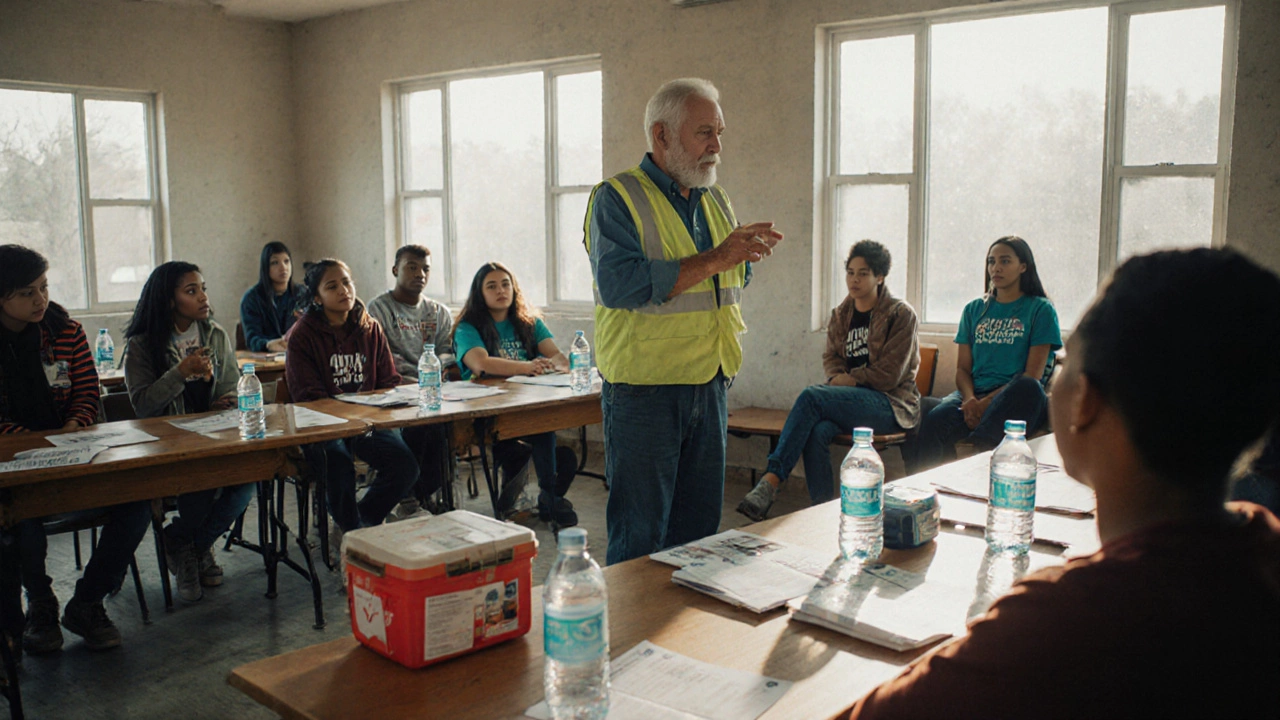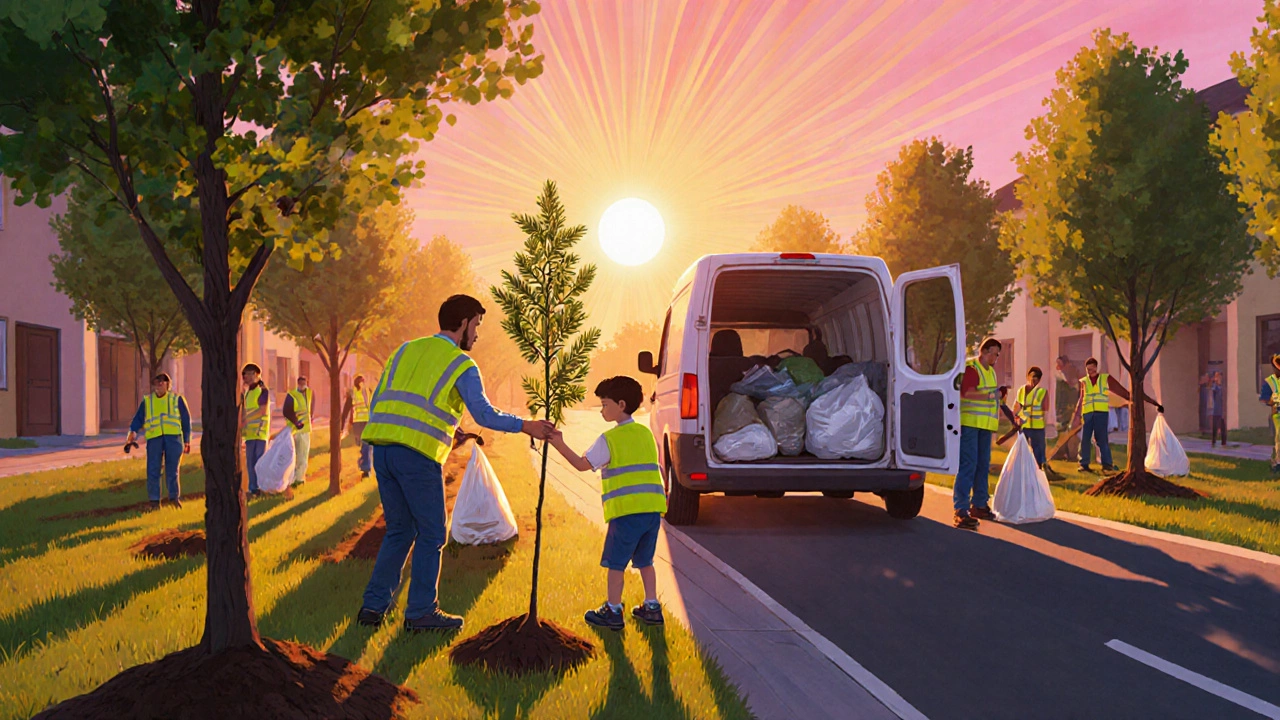When you want to make a real difference in your neighbourhood, the first question is usually "how do I get started?" A well‑planned community outreach program can bring people together, solve local problems, and build lasting relationships. Below is a practical, hands‑on roadmap that takes you from a vague idea to a running programme that actually shows results.
Define a clear purpose and set SMART goals
Before you call anyone or book a venue, you need a solid purpose. Ask yourself: what specific change do I want to see? SMART goals are a proven way to turn a broad mission into measurable steps. Each goal should be Specific, Measurable, Achievable, Relevant, and Time‑bound. For example, instead of "help the community," aim for "engage 150 residents in a neighbourhood clean‑up and plant 200 trees by 30September2026." This clarity guides every later decision and makes it easy to prove impact.
Map stakeholders and build local partnerships
Any outreach effort lives on relationships. Start with a Stakeholder analysis. List schools, businesses, faith groups, local council departments, and informal community groups that could help or be affected. Rank them by influence and interest, then reach out with a concise pitch that highlights mutual benefit. Forming a Local partnership not only widens your reach but also unlocks resources like meeting spaces, volunteers, or in‑kind donations.
Recruit and train volunteers
People are the engine of any outreach programme. Draft a volunteer profile - age range, skills, time commitment - and post it on local volunteer boards, social media, and partner newsletters. During recruitment, be transparent about expectations and the impact they’ll make. Once you have a core team, run a short training session that covers the program’s goals, safety procedures, and communication style. A well‑briefed volunteer feels valued and is more likely to stay engaged throughout the project.

Draft a realistic budget and secure funding
Even community‑run projects need money for supplies, permits, and promotion. Create a simple spreadsheet that lists every expense category: venue hire, printing, tools, refreshments, etc. Then identify potential funding sources - council grants, local business sponsorships, crowdfunding, or in‑kind donations. When you approach a sponsor, tie their contribution directly to a visible outcome (e.g., "£200 will cover reusable water bottles for 100 participants"). Clear budgeting builds credibility and prevents nasty surprises mid‑project.
Design outreach activities and marketing materials
Choose activities that align with your SMART goals and audience. Whether it’s a health‑fair, a clean‑up day, or a skills‑workshop, each event should have a clear agenda, required resources, and a lead volunteer. For promotion, develop a consistent visual identity - a logo, colour palette, and tagline - and apply it to flyers, social posts, and email newsletters. Consistency makes the programme recognisable and helps attract media coverage.
| Activity | Target audience | Typical cost | Volunteer load |
|---|---|---|---|
| Neighbourhood clean‑up | All residents | Low (supplies) | Medium (5‑10 volunteers) |
| Health‑screening fair | Seniors & families | Medium (equipment, professionals) | High (15‑20 volunteers) |
| Skills‑share workshop | Youth & job‑seekers | Low (venue & materials) | Low (2‑3 volunteers) |
| Community garden launch | Families & schools | Medium (plants, tools) | High (10‑12 volunteers) |

Execute the programme - timeline and logistics
With everything pre‑planned, map out a timeline that includes key milestones: partnership agreements, volunteer onboarding, material production, and event dates. Use a shared calendar (Google Calendar or Trello) so every volunteer sees the schedule. On the day of each activity, assign clear roles - greeter, set‑up crew, safety officer - and run a brief huddle to confirm tasks. Logistics like transport, signage, and emergency contacts should be double‑checked at least 24hours in advance.
Measure impact and iterate
After each event, gather data to evaluate success against your SMART goals. Simple metrics work well: number of participants, hours volunteered, resources distributed, or feedback rating. Conduct a short debrief with volunteers and partners to capture lessons learned. Then tweak the next round - maybe adjust the event time, add a new activity, or improve communication channels. Continuous improvement turns a one‑off event into a sustainable community asset.
Frequently Asked Questions
What is the first step in starting a community outreach programme?
Identify a clear purpose and set SMART goals. This gives you a concrete target and a way to measure success.
How many volunteers do I need for a small neighbourhood event?
For a basic clean‑up or information stall, 5‑10 volunteers are usually enough. Assign a lead, a set‑up crew, and a safety monitor.
Where can I find funding for a community outreach project?
Look at local council grants, corporate sponsorships, crowdfunding platforms, and in‑kind donations from partners. Tailor each pitch to show the sponsor’s direct impact.
How do I evaluate whether my outreach programme is effective?
Collect quantitative data (participants, hours, resources) and qualitative feedback (surveys, debrief notes). Compare these against the SMART goals you set at the start.
Can I run a community outreach programme without any budget?
It’s possible for low‑cost activities like a clean‑up, but you’ll still need some funds for materials or permits. Seek in‑kind donations to keep cash expenses minimal.
